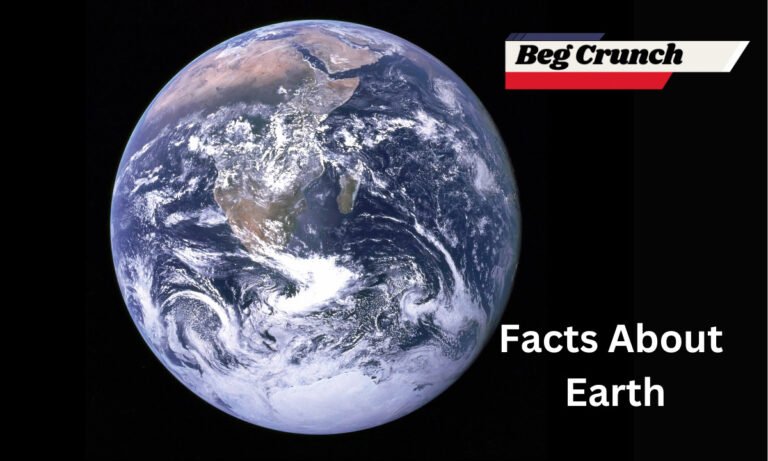Facts About Saturn
Saturn, often referred to as the “Ringed Planet,” stands as one of the most visually stunning and enigmatic planets in our solar system. Its iconic ring system has captivated astronomers and space enthusiasts for centuries. In this comprehensive article, we will delve into a plethora of intriguing facts about Saturn, exploring its unique characteristics, remarkable rings, historical significance, and ongoing exploration missions.
Unveiling Saturn: Key Physical Characteristics
Saturn’s distinct features set it apart as a captivating celestial body. Let’s explore some of its essential physical characteristics:
Size and Composition: A Glimpse into Saturn’s Sublime Dimensions
Saturn’s grandeur is unveiled through its remarkable diameter, which measures a staggering 116,464 kilometers (72,366 miles), positioning it as the second-largest planet within our solar system. This colossal size grants Saturn an imposing presence, its allure magnified by the complex interplay of forces that have shaped its character over countless millennia.
The planet’s composition unveils a majestic blend of elements, dominated primarily by hydrogen and helium, akin to its celestial sibling Jupiter—the largest planet in our cosmic neighborhood. This shared composition echoes the interstellar conditions from which these gas giants emerged, hinting at the intricate processes that molded the building blocks of our solar system.
Spectacular Ring System: A Cosmic Ballet of Ice and Dust
Saturn’s resplendent rings have elevated it to iconic status within our galactic tableau. Composed of a mesmerizing fusion of ice particles, rock, and cosmic dust, these rings encircle the planet, stretching across vast distances that span thousands of kilometers from its atmospheric boundary.
The intricate choreography of these celestial materials resonates with the symphony of cosmic forces that shaped Saturn’s environment. Delving deeper into Saturn’s rings reveals a mesmerizing diversity, with distinctive ring groups punctuated by gaps, aptly referred to as divisions. Among these, the A, B, and C rings take center stage, each presenting a unique palette of textures and characteristics. This dynamic arrangement speaks to the intricate interplay of gravitational forces, collisions, and cosmic interactions that have sculpted these captivating features.
Moons Galore: Saturn’s Lunar Tapestry
Saturn’s cosmic theater extends beyond its rings, captivating the gaze with a mesmerizing ensemble of moons that enrich its celestial narrative. An astounding count of over 80 confirmed satellites orbit this gas giant, forming an intricate dance of celestial bodies that bear witness to the cosmic history of our solar system.
Titan, the crown jewel of Saturn’s lunar collection, stands out as an unparalleled gem. Its allure stems from a rare combination: a thick atmosphere enveloping its surface and the presence of methane lakes, casting it as one of the most Earth-like entities in our cosmic vicinity. Titan’s intricate landscape fuels scientific inquiries into its geological history and the potential for extraterrestrial environments to harbor the building blocks of life.
Saturn Through History: Mythology and Discovery
Saturn’s significance extends beyond its physical traits, as it has held a place in human culture and history:
- Mythological Connections
- In ancient Roman mythology, Saturn was associated with agriculture and wealth. It was often depicted with a sickle, linked to its namesake, the Roman god Saturn.
- The planet’s striking rings were first observed by Galileo Galilei in 1610, using a primitive telescope.
- Pioneer and Voyager Missions
- The Pioneer 11 spacecraft conducted the first flyby of Saturn in 1979, providing crucial data about its rings and moons.
- The Voyager 1 and 2 spacecraft delivered breathtaking images of Saturn’s rings and discovered new moons, enriching our understanding of the planet.
Cassini-Huygens Mission: Unveiling Saturn’s Mysteries
Among the most groundbreaking exploration missions to Saturn was the Cassini-Huygens mission:
- Mission Overview
- Cassini-Huygens, which was launched in 1997, reached Saturn in 2004.
- The mission consisted of the Cassini orbiter and the Huygens probe, which successfully landed on Titan’s surface in 2005.
- Discoveries and Revelations
- Cassini provided unprecedented images and data about Saturn’s rings, revealing intricate structures, ringlets, and the dynamic nature of ring particles.
- The Huygens probe’s descent through Titan’s atmosphere unveiled its complex terrain and verified the presence of liquid methane lakes.
FAQs
Here are answers to some frequently asked questions about Saturn:
Q1: Can you stand on Saturn’s rings?
No, Saturn’s rings are not solid surfaces. They consist of countless small particles of ice and dust that orbit the planet.
Q2: Are Saturn’s rings permanent?
Saturn’s rings are not permanent features. They are composed of particles that are constantly being affected by gravitational interactions, collisions, and other forces.
Q3: Does Saturn have a solid surface?
Saturn is a gas giant, meaning it lacks a solid surface like Earth. Its composition transitions from a gaseous outer layer to a denser core.
Q4: Could life exist on Saturn’s moons?
Moons like Titan and Enceladus have garnered attention due to their potential to host some form of life. Titan’s unique atmosphere and Enceladus’ subsurface ocean make them intriguing targets for further study.
Exploring Saturn’s Future Horizons
Saturn’s allure continues to inspire astronomers and space agencies to explore its mysteries further. As we advance in technology and understanding, the Ringed Planet’s secrets are poised to unfold, providing insights into the broader mysteries of our universe.
Conclusion
Saturn, with its awe-inspiring rings, diverse moons, and historical significance, remains an object of fascination and wonder. Its intricate ring system and the mysteries hidden within its atmosphere and moons make it a rich subject of study and exploration. As humanity’s understanding of Saturn deepens, we anticipate even more astonishing revelations that will shed light on the complexities of our solar system and the broader cosmos.







